All of my opinions are italicized and sources are in blue.
There are two topics relating to this section: iFixit dropping the repairability score of the iPhone 14 and Phone Repair Guru findings on iPhone 15 Pro Max’s repairability.
iFixit has dropped their iPhone 14 score from 7 out of 10 to a do-not-recommend 4. The higher score came from the ability to remove the back glass on the 14, but they failed to include all the other anti-repair tactics. Even if you buy genuine Apple parts directly from Apple, from their self-service repair program, you have to call Apple to verify the repair.
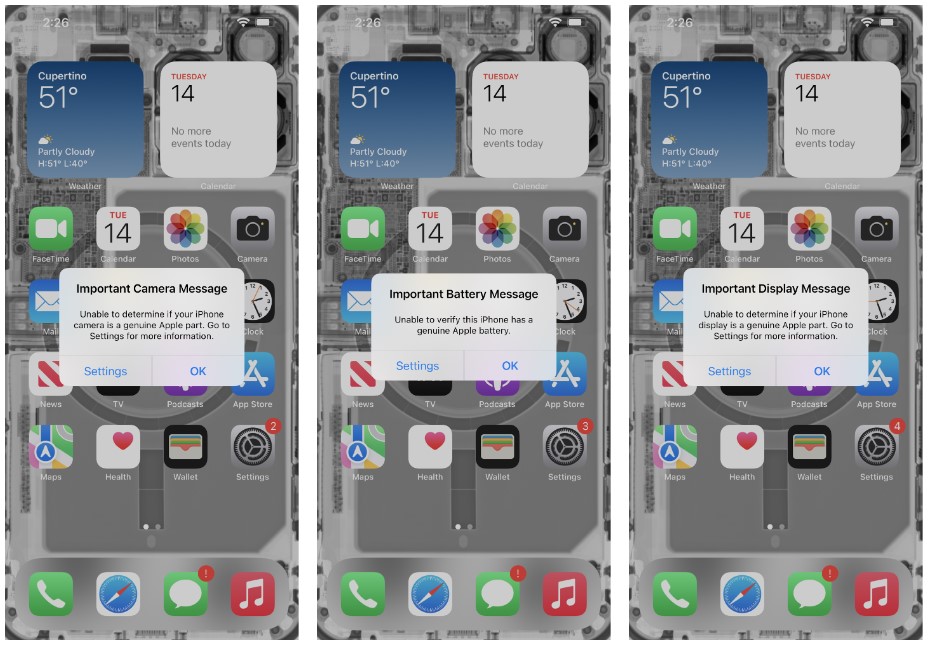
Lots of independent repair shops have business models that are threatened by Apple’s parts pairing practice. Shops harvest parts from broken devices. They use third-party parts. They shouldn’t have to send Apple their customers’ personal information, or agree to five years of audits just to do the repairs they know how to do.
Today, you need one more thing: a software handshake, using Apple’s System Configuration tool. It contacts Apple’s servers to “authenticate” the repair, then “pairs” the new part to your system so it works as expected. Of course, it can only authenticate if Apple knows about your repair in advance, because you gave them the exact serial number of your iPhone, and they’ve pre-matched it to a display or battery. This is only possible if you buy the screen or battery directly from Apple. Forget harvesting parts—which is a huge part of most independent repair and recycling businesses. It’s also impossible to pair any aftermarket parts—which means only Apple-authorized repairs can truly restore the device to full functionality.
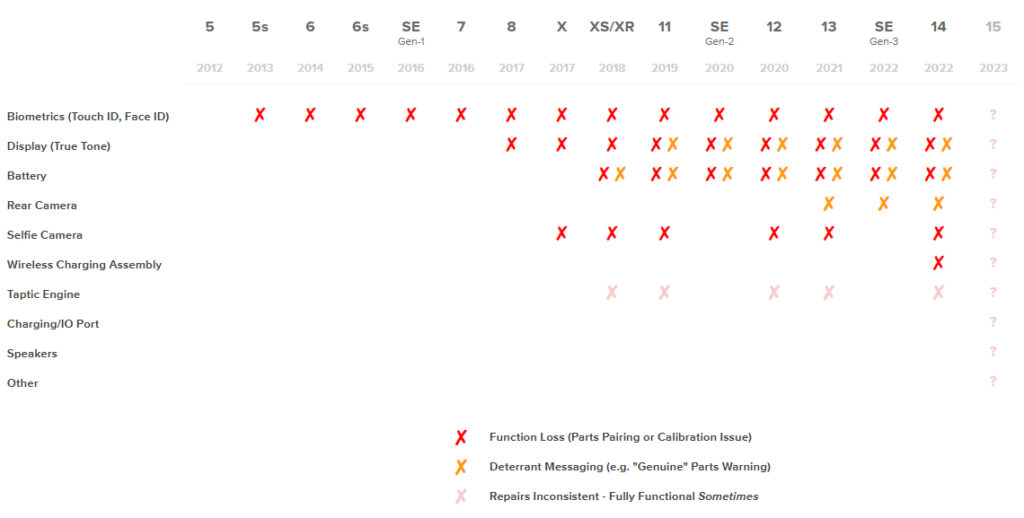
All of this goes against Apple supporting the recent Right to Repair movement in California and their environment goals set in the iPhone 15 event. All of these anti-repair measures are caused by software, so they could be easily fixed. If they truly cared about the environment, shouldn’t they update their previous phones to stop this.
In Phone Repair Guru’s recent video about the iPhone 15 Pro Max, he swapped the logic board of the two phones he had. This simulates a complete phone repair. While you should still watch the video, the results were that the iPhone 15 still had all of the previous anti-repair measures, like True Tone and FaceID not working (even though they are genuine Apple parts). The new anti-repair measure is the selfie camera not taking any pictures. Even after he factory reset the phone, which fixed it on the 14, the selfie camera still did not work. This could be a software bug instead of malice, but Phone Repair Guru believes it’s the latter based on previous experience.
The UK’s Online Safety Bill is ready to become law. The bill, which aims to make the UK “the safest place in the world to be online,” passed through the Houses of Parliament on Tuesday and imposes strict requirements on large social platforms to remove illegal content. It will be enforced by UK telecom regulatory agency Ofcom.
The Online Safety Bill mandates new age-checking measures to prevent underage children from seeing harmful content. It also pushes large social media platforms to become more transparent about the dangers they pose to children, while also giving parents and kids the ability to report issues online. Potential penalties are also harsh: up to 10 percent of a company’s global annual revenue.
But not only does online age verification raise serious privacy concerns — the bill could also put encrypted messaging services, like WhatsApp, at risk. Under the terms of the bill, encrypted messaging apps would be obligated to check users’ messages for child sexual abuse material.
Depending on how the rule is enforced, this could essentially break apps’ end-to-end encryption promise, which prevents third parties — including the app itself — from viewing users’ messages. In March, WhatsApp refused to comply with the bill and threatened to leave the UK rather than change its encryption policies. It joined Signal and other encrypted messaging services in protesting the bill.
Microsoft is planning to refresh its Xbox Series X console in 2024 with an all-new design and features. Codenamed Brooklin, the unannounced console refresh has been accidentally revealed in new FTC v. Microsoft documents this week.
The new Xbox Series X design looks a lot more cylindrical than the existing console and will ship without a disc drive. Internal confidential Microsoft documents reveal it has 2TB of storage (up from 1TB), a USB-C front port with power delivery, and an “all-new, more immersive controller.”
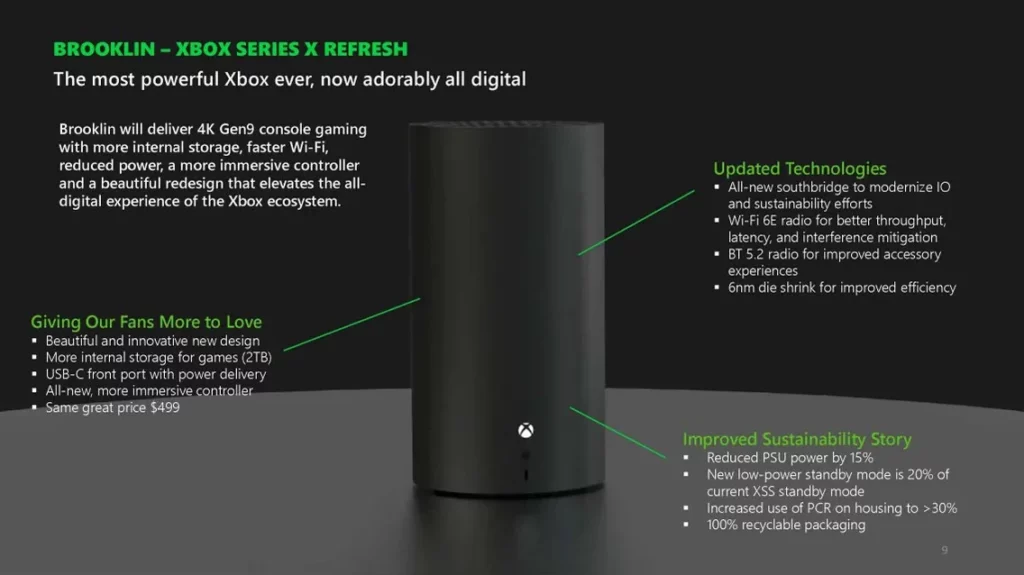
Inside the new Xbox Series X design, Microsoft is also adding Wi-Fi 6E support, a Bluetooth 5.2 radio, and the company is shrinking the existing die to 6nm “for improved efficiency.” The PSU power will be reduced by 15 percent, according to Microsoft’s document. Microsoft is targeting the same $499 launch price of the Xbox Series X.

The new controller, codenamed Sebile, is set to be announced early next year for $69.99 and will include an accelerometer which should let you merely lift it to wake the gamepad. It has a two-tone color scheme and will support a direct connection to cloud, Bluetooth 5.2, and a presumably updated “Xbox Wireless 2” connection. Microsoft also lists “precision haptic feedback” and “VCA haptics double as speakers” as specs for the controller. It will also have quieter buttons and thumbsticks, a rechargeable and swappable battery, and modular thumbsticks.
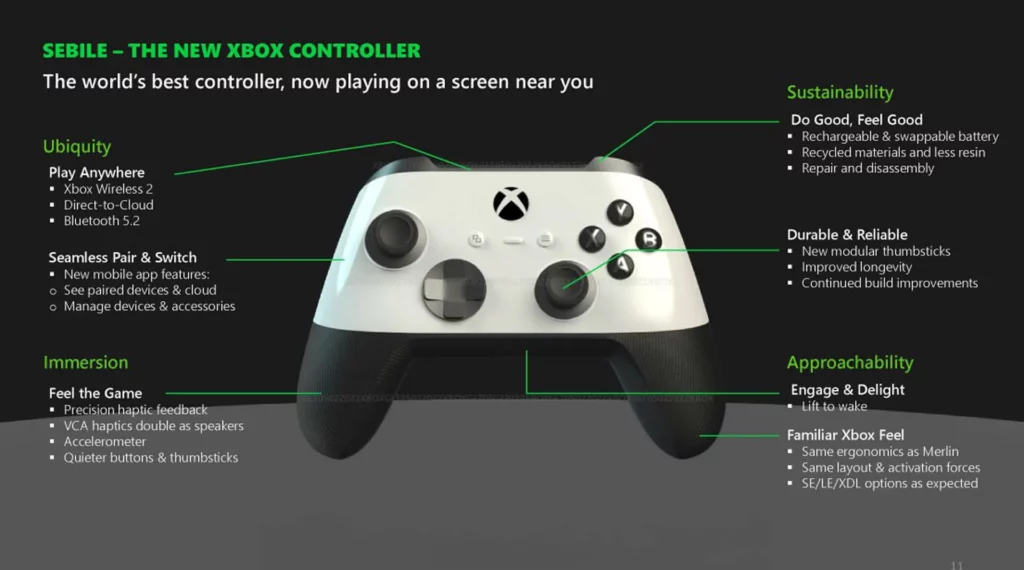
Douglas Farrar, FTC’s public affairs director, said the leak is Microsoft’s fault.
In Unity’s official blog post, Mark Whitten, lead of Unity Create, said the three little words that companies rarely use. “I am sorry”. He then went on about how Unity should have talked to the community first.
The new Runtime fees can be seen below, along with the previous one for context, but I would like to talk about some other changes Unity made. Unity Personal plan will remain free and there will be no Runtime Fee for games built on Unity Personal. While that change can be seen in the chart below, this is the interesting part: “We will be increasing the cap from $100,000 to $200,000 and we will remove the requirement to use the ‘Made with Unity’ splash screen”. This means that the runtime fees will improve the experience of Unity Personal users.
Another much needed change is “The Runtime Fee policy will only apply beginning with the next LTS version of Unity shipping in 2024 and beyond. Your games that are currently shipped and the projects you are currently working on will not be included – unless you choose to upgrade them to this new version of Unity”.
While the Runtime fees do make building games with Unity more expensive, I am glad that Unity listened to their community and admitted their flaws.
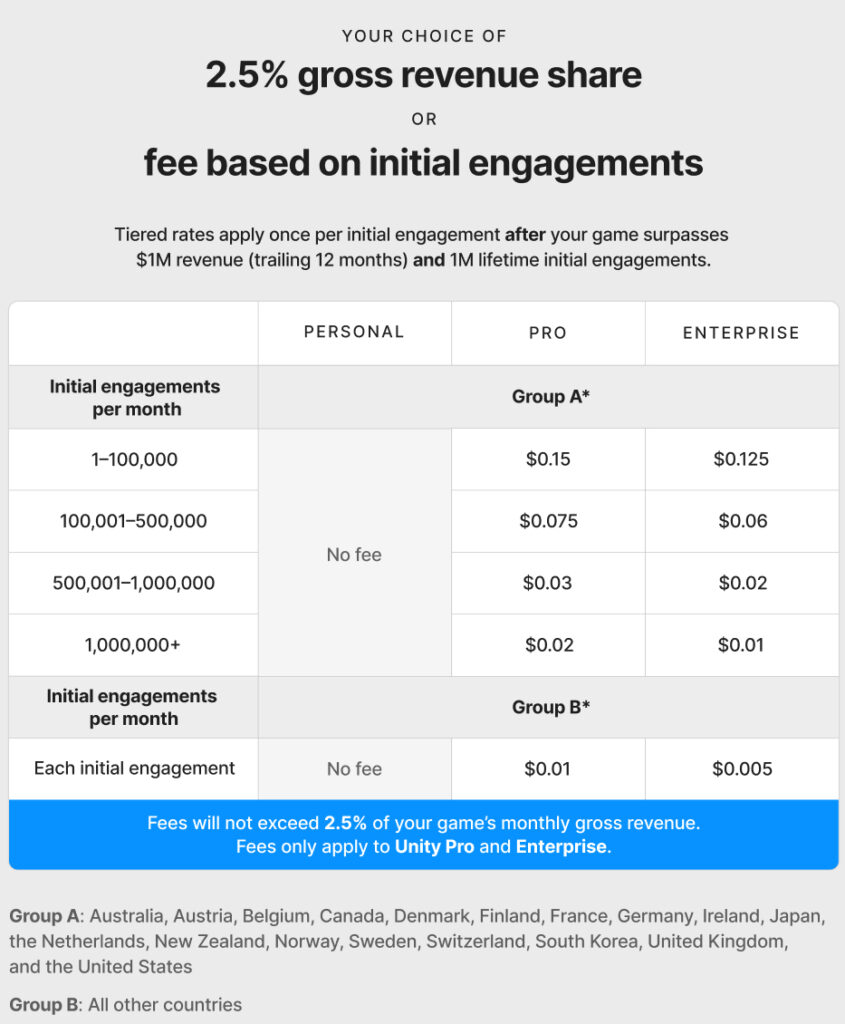


As reported by The Verge,
Microsoft announced a new unified Copilot experience in Windows 11, launching on September 26th. The new “everyday AI companion,” now called Microsoft Copilot in Windows, will be “seamlessly available across all the apps and experiences you use most,” including the Windows 11 desktop, Microsoft 365, Outlook, the Edge browser, and (uh) Bing.
With the appropriate permissions, the new Copilot will be able to pull data from your calendar, email, documents, and more to help you quickly draft texts and emails, and it’ll make suggestions in real time in apps like Outlook. It’ll also be able to pull context from Bing Mobile and Edge on your smartphone.
Copilot in Windows will let you control parts of the desktop experience with voice or text commands — in the video above, it’s shown arranging windows, toggling dark mode, launching specific Spotify playlists, generating full paragraphs of confident-sounding prose on minimalist architecture, and removing photo backgrounds. That’s a big step up from the current Start menu text box, which, in my experience, generally either fails to find relevant files and settings on the computer or outsources to Bing and fails to find them on the web.
Chess PSA by chess.com because too many kids are playing chess in school
Neuralink is recruiting subjects for the first human trial of its brain-computer interface (With a terrible acronym: PRIME stands for Precise Robotically Implanted Brain-Computer Interface)
Tim Cook claims he watched Ted Lasso season 3 on the Vision Pro
